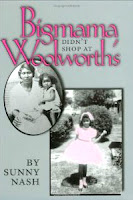Rosa Parks challenged Jim Crow laws and sparked the Montgomery Bus Boycott, launching Martin Luther King as leader of the Civil Rights Movement.
What would they think of the nation they left behind?
 |
| Photo: Rosa Parks Montgomery Bus Boycott |
Rosa Parks challenged Jim Crow laws, igniting the Montgomery Bus Boycott in 1955.
When Rosa Parks refused to give up her seat to white male bus rider, she quietly set the nonviolent tone used by Martin Luther King, Jr., in his nonviolent protest methods that left quite a legacy for both of these civil rights activists. The Civil Rights Movement of the 1960s, including the Woolworth Sit-ins and Freedom Riders, were modeled on this nonviolent tone.
Rosa Parks, was born on February 4, 1913, one hundred years ago, a child of Jim Crow laws.
 |
| Photo: Martin Luther King (podium) Rosa Parks (center) Montgomery Bus Boycott Montgomery Improvement Association Meeting |
Rosa Parks was raised by her grandparents on their' farm in rural Alabama near Tuskegee. The modern Civil Rights Movement had not begun at the time of her birth and her future chief partner in the Montgomery Bus Boycott, Martin Luther King, was not yet born.
After their arrest for inciting the Montgomery Bus Boycott, Rosa Parks and Martin Luther King formed the Montgomery Improvement Association to raise funds to administer the boycott. Administration of the Montgomery Bus Boycott included transportation to work and school for those who had previously ridden buses; money to bail bus boycott participants out of jail; and legal fees.
After their arrest for inciting the Montgomery Bus Boycott, Rosa Parks and Martin Luther King formed the Montgomery Improvement Association to raise funds to administer the boycott. Administration of the Montgomery Bus Boycott included transportation to work and school for those who had previously ridden buses; money to bail bus boycott participants out of jail; and legal fees.
 |
| Photo: Montgomery Buss Boycott in the rain |
Below is a video sketch of the education of Rosa Parks, an excerpt from a YouTube Biography Channel program.
Jim Crow laws were in effect from 1876 to 1965. For more videos on race relations in America, Subscribe to my YouTube Channel, iksunny.
Rosa Parks eventually went back and finished high school after she married Raymond Parks, who also encouraged her to join him in working with the Montgomery National Association for the Advancement of Colored People (NAACP).
 |
| Sign: No Spanish or Mexican |
| Rosa Parks: Tired of Giving in (African-American Biographies (Enslow)) |
On December 1, 1955, a beautiful, smart, high-school educated, hard-working, 42-year-old seamstress, named Rosa Parks, boarded a bus after work. Like every weekday, she sat down on a seat designated 'black seating.' Stop to stop, the bus filled, leaving no vacancies in the white section. The bus driver, familiar with this situation, ordered Rosa Parks to move from her seat to allow more seating for white passengers.
Again, the bus driver ordered Rosa Parks to move to another seat in his attempt to enforce a Jim Crow law that mandated racial segregation of all public and private facilities and separate but equal facilities for customers, clients, students, patrons, patients and passengers who were black or people of color.
 |
| Segregation on Alabama Bus Source: Birmingham Public Library Via: National Public Radio Montgomery Bus Boycott |
Jim Crow laws required blacks to give up seats to whites, as needed, determined by bus drivers. If whites were standing because their section of the bus was filled, the driver corrected the situation by ordering black riders to move from their seats to allow whites to sit instead. When Rosa Parks would not move from her seat, the bus driver haled a policeman to assist him in the matter. Thousands of people were involved in the Montgomery Bus Boycott, including many white people who were against segregated bus transportation in the city.
Below is a list of additional blog posts with photographs about Rosa Parks and the Montgomery Bus Boycott.
| The Montgomery Bus Boycott: A History and Reference Guide |
Rosa Parks: Black Womanhood, Rape & Lynching
Rosa
Parks, Sojourner Truth and Ida B. Wells created a century-long movement
(1850s-1950s) against Jim Crow laws that allowed rape and lynching of black women
and girls.
Before Rosa Parks, Sojourner Truth - Ain't I A Woman?
Before Rosa Parks, Sojourner Truth, a former slave, became a women’s and civil rights activist during the era of Jim Crow laws.
Blogger, Sunny Nash, is a writer, producer, photographer and leading author on race relations in America.
 |
| Sunny Nash |
 |
| Bigmama Didn't Shop At Woolworth's by Sunny Nash Hard Cover Bigmama Didn't Shop at Woolworth's Amazon Kindle Bigmama Didn't Shop at Woolworth's |
Nash is also a producer, photographer, blogger and a leading writer on race relations in America--writes books, blogs, articles and reviews, and produces media and images on U.S. history and contemporary American topics, ranging from Jim Crow laws to social media networking, using her book, Bigmama Didn't Shop at Woolworth's, chosen by the Association of American University Presses for its value to understanding of U.S. race relations, to relate experiences about life with her part-Comanche grandmother.
Sunny Nash produces blogs, media, books, articles and images on history and contemporary topics, from slavery, the Civil War, Jim Crow and civil rights to post racism, social media, entertainment and technology using her book, Bigmama Didn’t Shop At Woolworth’s, as a basis for commentary and research.
"My book, 'Bigmama Didn't Shop At Woolworth's,' began in the 1990s. I was writing for Hearst and Knight-Ridder newspapers. The stories are about my childhood with my part-Comanche grandmother, Bigmama, my parents, relatives, friends, and others; and my interpretation of the events surrounding the Jim Crow South before and during the Civil Rights Movement.
Robin Fruble of Southern California said, "Every white person in America should read this book! Sunny Nash writes the story of her childhood without preaching or ranting but she made me realize for the first time just how much skin color changes how one experiences the world. But if your skin color is brown, it matters a great deal to a great number of people. I needed to learn that. Sunny Nash is a great teacher," Fruble said.
© 2012 Sunny Nash. All Rights Reserved Worldwide.
~Thank You~



No comments:
Post a Comment
Note: Only a member of this blog may post a comment.